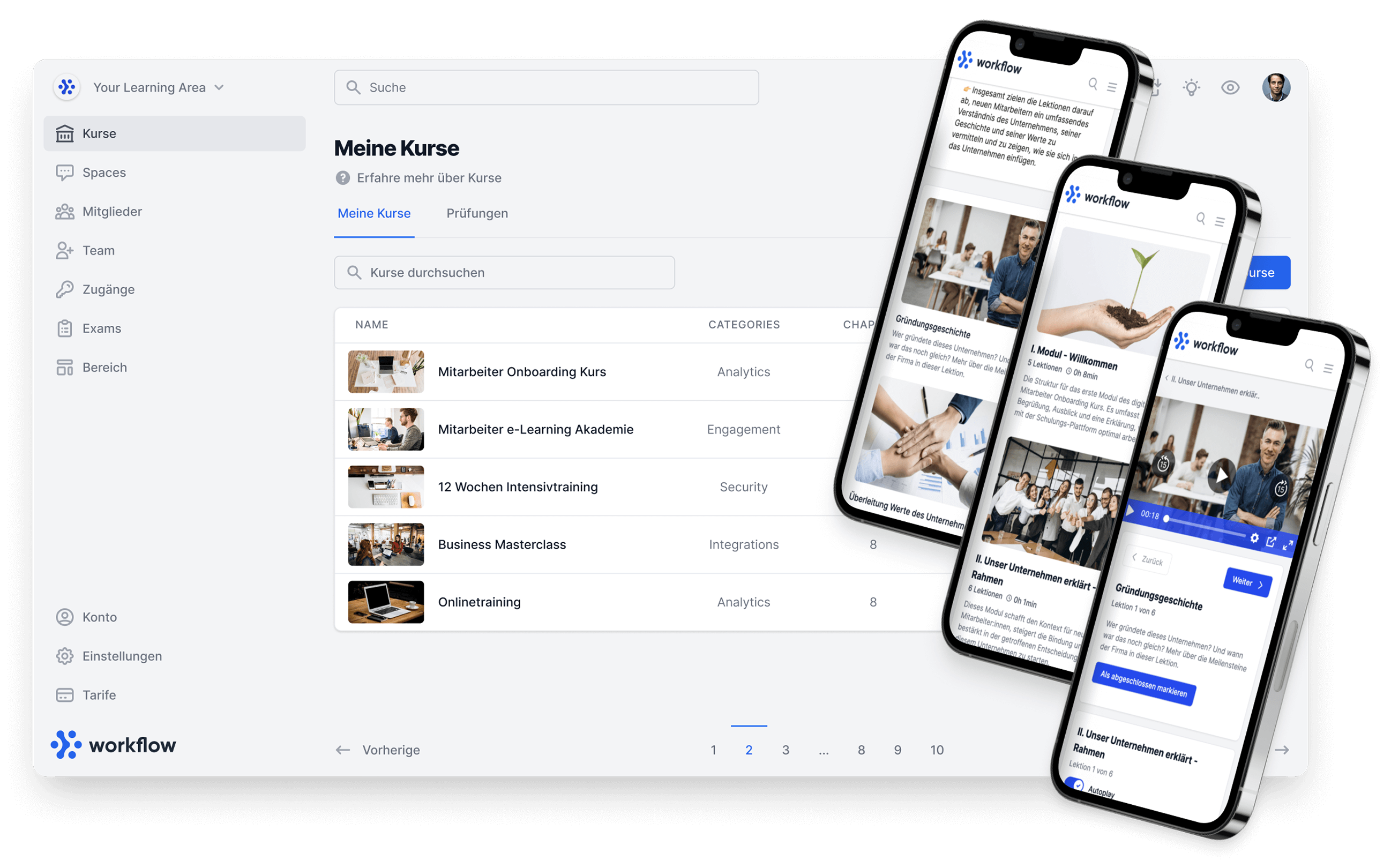Wie modernes E-Learning das Onboarding nachhaltig verbessert
Astrong start makes all the difference: new employees bring a breath of fresh air and valuable skills to the company. But how quickly they really arrive and contribute to productivity depends crucially on onboarding. Many companies are wasting enormous potential here - due to unstructured processes, overloaded teams and a lack of digital support. Yet there has long been an effective solution: e-learning.
This blog article shows how digital onboarding with e-learning integrates new employees faster, relieves HR and strengthens employee loyalty in the long term. And why a structured onboarding process is now more worthwhile than ever.
Why is effective onboarding so crucial?
The first few weeks in a new job are crucial: employees who feel quickly integrated and well trained stay with the company longer and contribute to value creation more quickly. However, many companies struggle with inefficient, time-consuming onboarding processes that cause high costs and increase staff turnover. In fact, studies show that 20% of new employees leave within the first 45 days if they do not feel they are in good hands.1

Typical problems with traditional onboarding:
- Lack of structure and clear processes
- High time expenditure for HR teams and managers
- New employees overwhelmed by information overload
- Unzureichende Einbindung in das Team und die Unternehmenskultur
But how can a company meet these challenges? The solution lies in digital onboarding with e-learning.
E-learning as a game changer in onboarding
Modern onboarding processes rely on digital learning platforms and interactive content to train new employees more efficiently. Instead of working through piles of documents or struggling through monotonous PowerPoint presentations, new team members can move through structured, multimedia e-learning modules at their own pace.
The advantages of e-learning in onboarding:
Strukturierte und standardisierte Prozesse – Alle neuen Mitarbeiter erhalten die gleichen, gut durchdachten Inhalte.
Zeitersparnis für HR & Führungskräfte – Statt stundenlanger Einführungsgespräche sind viele Abläufe automatisiert.
Flexibilität – Mitarbeiter lernen in ihrem eigenen Tempo, von überall und jederzeit.
Messbare Erfolge – Durch Learning Analytics lässt sich der Fortschritt nachverfolgen.
Bessere Mitarbeiterbindung – Ein interaktiver, motivierender Start sorgt für langfristige Loyalität.
The three phases of successful digital onboarding
A good onboarding process doesn't just start on the first day of work, but even before that - and extends beyond the first few months. Successful digital onboarding follows three clear phases:
1. preboarding: before the first working day
Even before they start, new employees should be familiarized with the company and their new role. E-learning can provide the initial basics to ensure an optimal start.
📌 Typical contents:
- Welcome tour of the company (e.g. via video)
- Presentation of the corporate culture and values
- Important organizational information (e.g. IT setup, first tasks)
- Kennenlernen des Teams über digitale Kanäle
2. onboarding: the first weeks in the company
As soon as the employee officially starts, the aim is to fully integrate them professionally and socially. Digital learning modules help them to learn processes and tools quickly.
📌 Typical contents:
- Introduction to business processes & IT systems
- Product training or industry know-how
- Security and compliance training
- Interaktive Checklisten zur Aufgabenverteilung
3. post-boarding: sustainable integration and further development
Learning should not stop after the first few weeks. Digital training opportunities ensure long-term motivation and development opportunities.
📌 Typical contents:
- Further in-depth training courses
- Interactive feedback rounds with HR and managers
- Individuelle Lernpfade für Karriereentwicklung
Practical example: How a company optimized its onboarding with e-learning
A medium-sized IT company had problems with high staff turnover in the first three months. Traditional onboarding was unstructured and time-consuming. After introducing a digital e-learning platform, they were able to achieve the following successes:
✔ Reduction of the training period by 40%
✔ Improved employee satisfaction - less uncertainty
✔ 90 % of new employees felt integrated more quickly
The use of interactive modules, quiz formats and interactive elements not only made onboarding more efficient, but also more motivating.2

Conclusion: rely on digital onboarding for long-term success
Well thought-out onboarding with e-learning is a decisive success factor for companies. It saves time, reduces costs and ensures greater employee satisfaction. If you want to retain new talent in the long term, you should rely on modern onboarding strategies now.
📅 Want to learn more? Download our new whitepaper now and optimize your onboarding with digital solutions!
👉 Jetzt Whitepaper herunterladen und durchstarten!
Enjoy reading our white paper. 📚
Best regards
Your Memberspot Team 👋🏽
1https://www.zavvy.io/blog/mitarbeiter-onboarding-statistiken










.png)